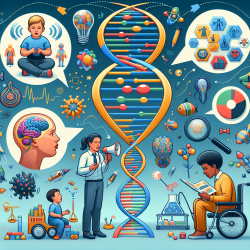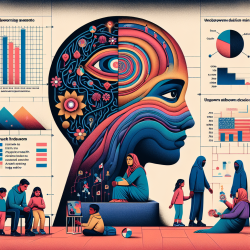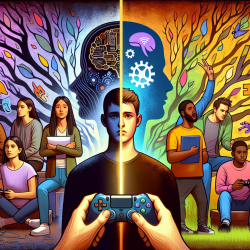Introduction
In the ever-evolving field of speech-language pathology, practitioners are constantly seeking innovative tools to enhance therapeutic outcomes for children. One such promising development is the miniaturized near-infrared spectrometer, as explored in the research article "Electrically Tunable Two-Dimensional Heterojunctions for Miniaturized Near-Infrared Spectrometers" by Deng et al. This groundbreaking technology offers a new dimension in data collection and analysis, potentially revolutionizing how we assess and support children's developmental progress.
Understanding the Technology
The research delves into the creation of a micron-sized spectrometer using two-dimensional van der Waals heterostructures (2D-vdWH). By integrating heavy metal atoms with delocalized electronic orbitals between these structures, the researchers have significantly enhanced interlayer coupling. This results in an electrically tunable infrared photoresponse ranging from 1.15 to 1.47 micrometers, allowing for precise spectral reconstruction and imaging. The compact design, with an active footprint of less than 10 micrometers, makes it an attractive solution for on-chip infrared spectroscopy.
Implications for Speech-Language Pathology
For speech-language pathologists, the application of miniaturized spectrometers can be transformative. These devices can provide real-time, non-invasive insights into physiological processes, such as brain activity and blood oxygenation levels, which are crucial for understanding and supporting language development in children. By integrating these spectrometers into therapeutic settings, practitioners can:
- Monitor and assess neurological responses during language tasks.
- Tailor interventions based on precise, data-driven insights.
- Enhance engagement and motivation through interactive, technology-driven therapy sessions.
Encouraging Further Research
While the potential applications are vast, further research is needed to fully integrate miniaturized spectrometers into clinical practice. Practitioners are encouraged to collaborate with researchers to explore the following areas:
- Developing protocols for the use of spectrometers in various therapeutic contexts.
- Investigating the impact of real-time data on therapy outcomes.
- Exploring the ethical considerations and data privacy issues related to the use of advanced technology in therapy.
Conclusion
As we continue to embrace data-driven approaches in speech-language pathology, the integration of advanced technologies like miniaturized spectrometers holds immense promise. By leveraging these tools, we can enhance our understanding of child development and create more effective, personalized interventions. The journey toward better outcomes is paved with innovation, and it is our responsibility to explore and harness these advancements for the benefit of the children we serve.
To read the original research paper, please follow this link: Electrically tunable two-dimensional heterojunctions for miniaturized near-infrared spectrometers.










